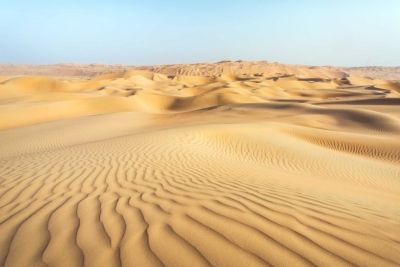
|
Today’s deserts were not always arid lands, and their soil was held in place by plants and trees. But when vegetation dies out, the soil is exposed to erosion. Gradually, the lighter clay and dried organic particles are blown away by the wind, leaving behind grains of sand made up of small particles from eroded rocks. |
Sand consists of small particles of larger rock that’s been eroded. But erosion doesn’t happen fast enough in arid environments to be the only cause of desert sand.
Nearly all sand in deserts came from somewhere else – sometimes hundreds of kilometers away. This sand was washed in by rivers or streams in distant, less arid times – often before the area became a desert.
Once a region becomes arid, there’s no vegetation or water to hold the soil down. Then the wind takes over and blows away the finer particles of clay and dried organic matter. What’s left is desert sand.
Finding the exact origin – the source rock – of a desert’s sand can be difficult. Scientists might look for the origin by following dried riverbeds upstream or by tracking the “footprints” that sand left as it traveled – for example, streaks on the faces of boulders left behind by blowing sand in centuries past.
Sometimes an entire desert has migrated due to movement of Earth’s huge overlying land plates. When that’s happened, pieces of the same source rock are sometimes discovered on both sides of a fault line. When scientists identify a potential source rock, they match it to sand grains by its age and composition.
Credit: Earth Sky
Picture Credit : Google




